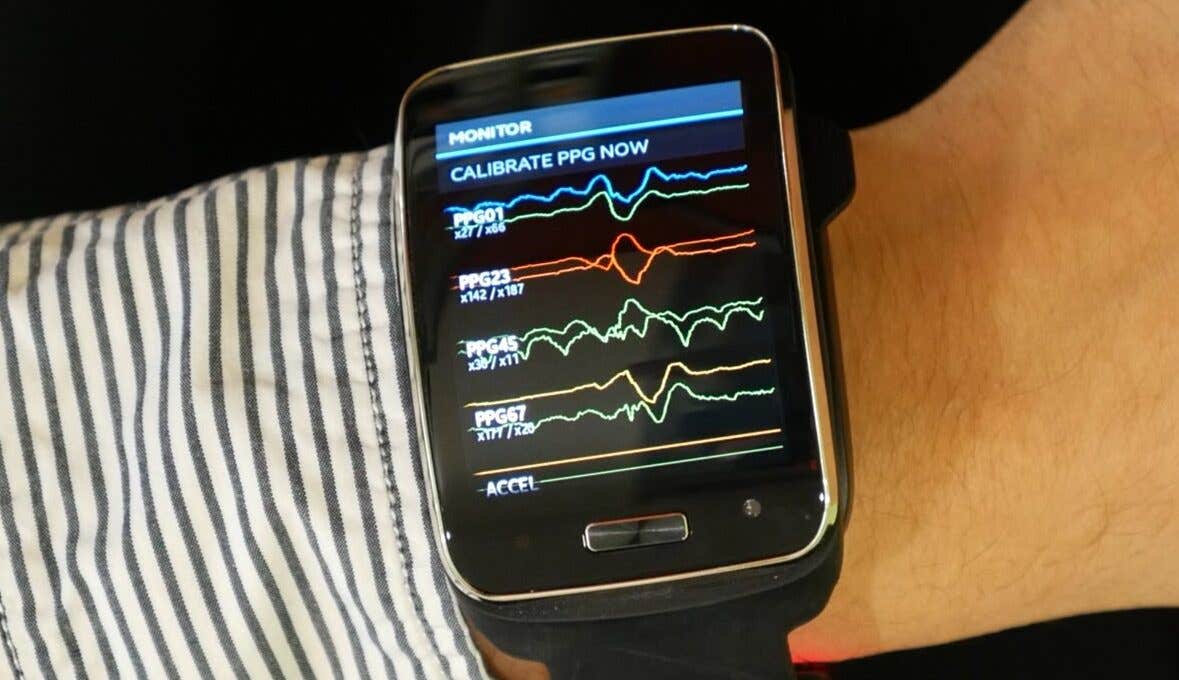Breakthrough new technologies can read your emotions through your skin
Skin conductance is transforming emotion-sensitive technology, offering privacy-friendly ways to analyze and respond to human emotions.

Unlike facial or voice recognition, which can raise ethical concerns, skin conductance provides a privacy-friendly alternative for emotion tracking. (CREDIT: CC BY-SA 4.0)
The development of emotion-sensitive technologies is revolutionizing how devices interact with humans, moving beyond traditional methods like facial expression analysis and voice recognition. These technologies are exploring physiological signals that provide a more nuanced understanding of emotions.
One such signal is skin conductance, a measure of the electrical properties of the skin that change with perspiration. These changes occur rapidly, often within one to three seconds of an emotional stimulus, making skin conductance an effective tool for studying transient emotional states such as fear, pleasure, and surprise.
Skin conductance offers a privacy-friendly alternative to facial and vocal data, which often raise ethical concerns. Its ability to respond quickly to emotional stimuli makes it a valuable asset in the growing field of emotion recognition.
Studies have shown that the intensity of emotional arousal moderately correlates with skin conductance response, further validating its use as a reliable proxy for emotion detection. When combined with other physiological signals like electromyography or electroencephalograms, the precision of emotion analysis is enhanced significantly.
Research has increasingly focused on classifying emotions using standard features of skin conductance, such as peak values and response latencies. Previous studies have demonstrated the effectiveness of skin conductance in identifying various emotional states.
For instance, researchers have used it to classify levels of arousal evoked by visual stimuli, distinguish emotions like happiness, disgust, and fear, and analyze complex responses to emotional video clips.
Despite this progress, much of the focus has been on static features, leaving the dynamic aspects of skin conductance responses relatively underexplored.
Recent advancements by researchers from Tokyo Metropolitan University have addressed this gap by examining how the dynamics of skin conductance responses differ among emotional states.
Related Stories
Using mathematical models based on electrical circuit systems, the team analyzed parameters such as time constants and natural frequencies to better understand the temporal dynamics of emotional responses.
These models enable a deeper exploration of the relationship between physiological signals and emotional stimuli, opening new avenues for emotion recognition.
In a pivotal experiment, researchers studied skin conductance responses in volunteers exposed to emotionally evocative video clips. The videos were selected to elicit three distinct emotional states: fear, family bonding, and humor.
Fear-inducing scenes from horror films triggered prolonged skin conductance responses, which may reflect an evolutionary trait that prolongs the perception of danger for survival.
Emotional scenes of family bonding, such as reunions after long-term separation, produced slower but sustained responses, likely due to the complex interplay of sadness and happiness inherent in such moments. In contrast, humor elicited quicker, transient responses consistent with its lighthearted nature.
The selection of these emotions was guided by Russell’s circumplex model of emotion, which categorizes emotional states based on valence (positive or negative) and arousal levels.
Fear occupies the quadrant of negative valence and high arousal, humor resides in the positive valence and moderate arousal space, and family bonding represents a mixture of positive and negative valences with varying arousal levels. These distinctions allowed the researchers to systematically compare skin conductance responses across a broad emotional spectrum.
The analysis revealed significant trends in how different emotional states manifest through skin conductance. Fear was associated with the longest-lasting responses, reflecting its evolutionary importance. Family bonding emotions exhibited a slower increase in response, likely due to the emotional complexity of these experiences.
Humor produced rapid and transient changes, underscoring its straightforward and positive nature. Statistical analysis of these responses demonstrated that dynamic parameters could be used to predict emotional states with significant accuracy. While not perfect, this approach represents a major step forward in the development of emotion-sensitive technologies.
These findings highlight the potential of skin conductance as a tool for emotion recognition. Unlike traditional methods that rely heavily on facial and vocal cues, skin conductance provides a less invasive and more universally applicable alternative.
Its integration with other biosignals, such as facial temperature or heart rate variability, could further enhance the accuracy of emotion-sensitive systems. This progress brings us closer to a future where devices not only understand our emotions but also respond to them in meaningful ways.
The implications of this research extend beyond consumer electronics. In mental health therapy, emotion-sensitive technologies could provide real-time assessments of patients’ emotional states, enabling more tailored interventions. In education, these tools might help teachers gauge student engagement and adjust their methods to better meet individual needs.
The entertainment industry could also benefit, with personalized content that adapts to viewers’ emotions in real-time. Importantly, these technologies address the ethical and privacy concerns associated with traditional emotion recognition methods, paving the way for innovations that respect individual boundaries.
This emerging field of study demonstrates how physiological signals like skin conductance can bridge the gap between human emotions and machine interpretation. By shifting focus from facial and vocal analysis to less invasive measures, researchers are redefining the possibilities of emotion-sensitive technology.
The work being done underscores the transformative potential of these advancements, bringing us closer to a future where technology interacts with us more naturally, understanding and responding to our emotions in ways that were once unimaginable.
Note: Materials provided above by The Brighter Side of News. Content may be edited for style and length.
Like these kind of feel good stories? Get The Brighter Side of News' newsletter.
Joshua Shavit
Science & Technology Writer | AI and Robotics Reporter
Joshua Shavit is a Los Angeles-based science and technology writer with a passion for exploring the breakthroughs shaping the future. As a contributor to The Brighter Side of News, he focuses on positive and transformative advancements in AI, technology, physics, engineering, robotics and space science. Joshua is currently working towards a Bachelor of Science in Business Administration at the University of California, Berkeley. He combines his academic background with a talent for storytelling, making complex scientific discoveries engaging and accessible. His work highlights the innovators behind the ideas, bringing readers closer to the people driving progress.



